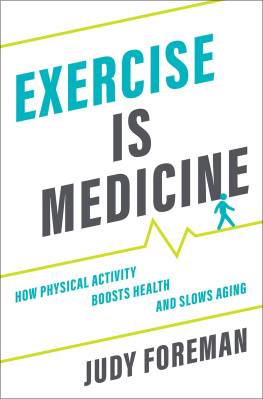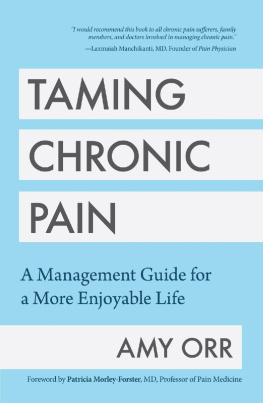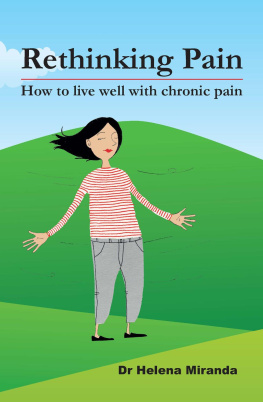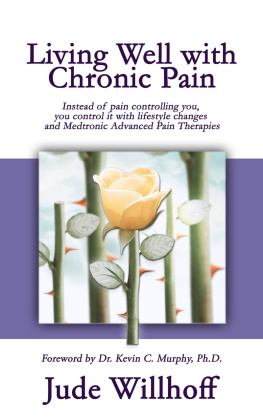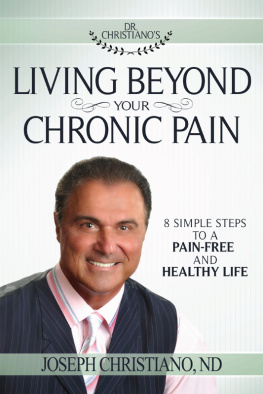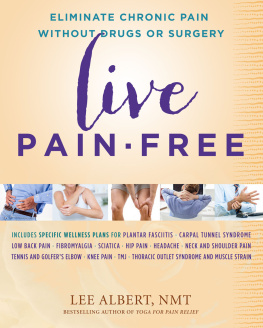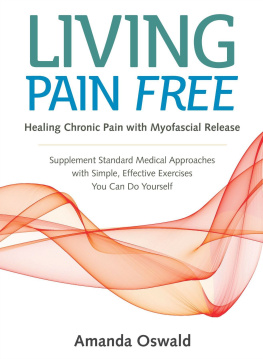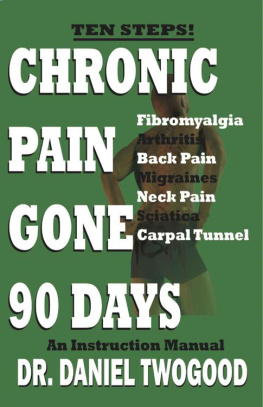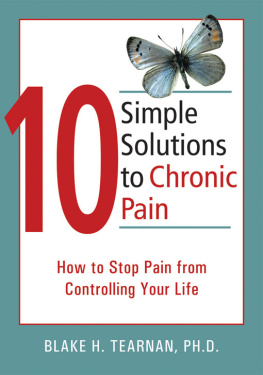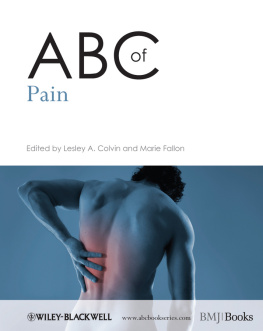A Nation in Pain
A NATION IN PAIN
Healing Our Biggest Health Problem
Judy Foreman


Oxford University Press is a department of the University of Oxford.
It furthers the Universitys objective of excellence in research, scholarship, and education by publishing worldwide.
Oxford New York
Auckland Cape Town Dar es Salaam Hong Kong Karachi
Kuala Lumpur Madrid Melbourne Mexico City Nairobi
New Delhi Shanghai Taipei Toronto
With offices in
Argentina Austria Brazil Chile Czech Republic France Greece
Guatemala Hungary Italy Japan Poland Portugal Singapore
South Korea Switzerland Thailand Turkey Ukraine Vietnam
Oxford is a registered trademark of Oxford University Press in the UK and certain other countries.
Published in the United States of America by
Oxford University Press
198 Madison Avenue, New York, NY 10016
Judy Foreman 2014
All rights reserved. No part of this publication may be reproduced, stored in a retrieval system, or transmitted, in any form or by any means, without the prior permission in writing of Oxford University Press, or as expressly permitted by law, by license, or under terms agreed with the appropriate reproduction rights organization. Inquiries concerning reproduction outside the scope of the above should be sent to the Rights Department, Oxford University Press, at the address above.
You must not circulate this work in any other form and you must impose this same condition on any acquirer.
Library of Congress Cataloging-in-Publication Data
Foreman, Judy.
A nation in pain : healing our biggest health problem / Judy Foreman. pages cm
ISBN 9780199837205
1. Chronic painUnited States. 2. Chronic painTreatment
United States. 3. Opioid abuse United StatesHistory. 4. PainAlternative treatment. I. Title.
RB127.F672 2013
616.0472dc23
2013015742
9 8 7 6 5 4 3 2 1
Printed in the United States of America
on acid-free paper
To Ken
CONTENTS
I n this book, I will argue that lack of adequate pain control is one of the most urgent health problems in America. In my research over the last five years, I have interviewed nearly 200 scientists and physicians, as well as countless patients, a few lawyers, and a handful of government officials. I have amassed a roomful of books on pain and hundreds upon hundreds of scientific papers.
I have found that there is an appalling mismatch between what people in pain need and what doctors know. Pain is the main reason that patients go to doctors, but most doctors know almost nothing about it, much less how to treat it. Doctors get only a few hours of pain education throughout four years of medical school. Even veterinarians get more.
The government, specifically the National Institutes of Health, the countrys premier research establishment, isnt much better. It spends only about 1 percent of its vast budget on pain research, despite the fact that chronic pain is now considered a disease in its own right and is a bigger problem than heart disease, cancer, and diabetes combined. Indeed, federal spending on chronic pain is actually going down.
Culture wars over prescription pain relievers play into all this, too. I discovered that opioids (narcotics) are like airplane foodnot great, but hard to get enough of when youre in need. But opioids are all too easy to get if you are a street abuser. Tragically, politics still means the government is focused more on punishing abusers than helping patients.
Nor does our healthcare reimbursement system get it right. It skimps on things that take a doctors timelike talking to patients and rewards interventions like surgery and injections that may or may not help.
I got into all this the hard way, with excruciating neck pain that came on, seemingly out of the blue, a few years ago. Like other pain patients, I trekked from doctor to doctor looking for helpand once, in desperation, to the emergency room, where I felt I was viewed more as a potential drug-seeker than as a person in severe pain.
I am better now. I tried much of what youll read about in the second half of this bookopioids, NSAIDs, physical therapy, exercise (lots), meditation, acupuncture, massage, steroid injections, and Botox pretty much everything except surgery and marijuana. I learned that nothing really cures pain, but that lots of things can help a little, and that adding them all together can decrease it a bit more.
Today, I count myself lucky. I am no longer living in pain. But I have come to believe that the failure to better manage pain borders on torture by omission. Many peoplesome of whose stories you will read in the coming pagesare still living in pain, though, as youll see, some manage to live extremely fulfilling lives.
Whatever your pain nowor the pain of someone you loveI hope this book will help you to better understand your pain and fight for the care you need.
Judy Foreman
Cambridge, Massachusetts
June 2013
I f youre a patient whos outraged at the way youve been treatedor not treatedfor your pain, is a must-read. Chronic pain is a problem of staggering proportions, yet many people with chronic pain feel utterly alone.
If you truly, deeply, absolutely hate science, just skim through on the genes that rev pain up or damp it down. Even just skimming these chapters should convince you that, no matter what youve been told, your pain is not all in your head. If youre a physician, these chapters are a must-readchances are that much of the research discussed was never taught in medical school.
If youre a woman and believe your pain has been dismissed in part because of your gender, is for you. Especially if you believe the myth that women dont feel pain as much as men!
Even if you dont have kids, is an eye-opener because of the appalling way we have undertreatedand still undertreat pain in children.
Researching , the mindbody section, was one of the highlights of this book for me. Youll read about the complex overlap between pain and depression, how the habit of catastrophizing (fearing the worst) can make pain worse, and how cognitive behavior therapy, distraction, meditation, hypnosis, and biofeedback can make it better. Significantly better.
doctors, think. Youll learn the difference between dependence and addiction, about the mixed results of government efforts to monitor prescription pain relievers, and about the limits of opioids themselves. Sadly, opioids are not nearly as effective, especially in the long term, as one would hope. Clearly, something better is needed.
One such something is the focus of , which lays out an entirely new approach to treating pain not with opioids, but with drugs that act on specialized immune cells called glial cells. Its news to most people, but the immune system actually interacts with the nervous system to turn acute pain into chronic pain. This is good news because it gives scientists new drug targets, potentially reducing the need for opioids.
I decided to include an entire chapter () on marijuana because it is so often overlooked in pain management. The science behind marijuanas efficacy for pain is fascinating. In fact, our bodies actually make our own marijuana-like substances. I explore in detail the risks and benefits of marijuana, as well as the political challenges to its wider use.
In traditional Western treatments for painI assess the safety and effectiveness of a wide range of treatments including electrical stimulation, transcranial magnetic stimulation, injections, nerve-killing techniques, surgery, and new drugs in the pipeline. Hopefully, you will find some options that you may not have tried.
Next page

